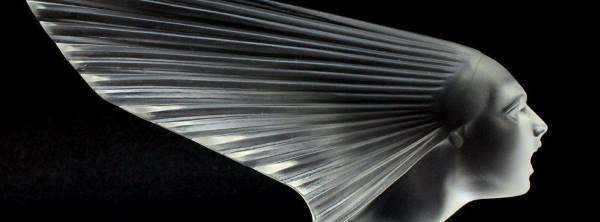One of the most exotic and intriguing figures in the Old Testament is the legendary Queen of Sheba. Although her visit to the court of King Solomon is only mentioned briefly in the Books of Kings and Chronicles,1 her stature in the Bible, and her subsequent impact on the imagination of writers and artists down through the ages, has been immense.
‘And when the Queen of Sheba heard of the fame of Solomon & she came to test him with hard questions. And she came to Jerusalem with a very great train, with camels that bare spices, and very much gold, and precious stones: and when she was come to Solomon, she communed with him of all that was in her heart. And Solomon told her all her questions: there was not any thing hid from the king, which he told her not.’2
The detailed description of the Queen’s treasures declares her to be a rich and powerful ruler, while her immediate testing of the King’s wisdom with ‘hard questions’ reveals that she considers herself his equal in knowledge as well as wealth. Marina Warner has observed that it is very unusual for a woman in the Judeo-Christian tradition to be accorded a role of such authority3-which, in turn, is reinforced by Solomon’s response to her questions. For their meeting becomes a mutual exchange of ideas and beliefs: she told him ‘all that was in her heart’, while he trusts her with everything he knows and understands.
The truth behind this fabled meeting, or more accurately, the extent to which historical evidence supports the existence of a Queen of Sheba, is one of the important subjects addressed by a current exhibition at the British Museum.4 A range of artefacts and inscriptions, uncovered during archaeological excavations in Yemen over the past several decades, has shed new light on the pre-Islamic civilisation of Southern Arabia. In particular, the exhibition examines the ancient kingdom of Saba’, a major trading centre specialising in gold, precious stones and aromatic substances, that flourished during the eighth century BC and possibly much earlier. Certainly the richness of Sabaean culture uncovered by these excavations accords with the Biblical record of the Queen of Sheba’s great wealth and sophistication.
For modern audiences, it is the legend of the Queen herself rather than the historical facts of the Sabaean kingdom that holds the greatest appeal. Over the centuries, the evocative but brief Old Testament story has undergone a series of embellishments by Jewish, Christian, Islamic and Ethiopian writers. The exhibition conveys these colourful traditions by displaying an array of works of art from Europe, the Middle East and Africa, dating from the fifteenth to the twentieth century.
For instance, something of the magic and exoticism of the Qur’anic (Koranic) tradition is reflected in the beautiful sixteenth-century tinted drawing from Iran, which shows an elegantly reclining Bilqis (as the Queen of Sheba is called in Islam) communing with the hoopoe bird. The bird has been sent by Solomon, who in the Qur’an is a great king and prophet of God, with wizard-like powers. Having heard of a fabulously rich but pagan queen in the south, Solomon dispatched the bird with a message demanding ‘In the name of God, the Merciful, the Compassionate; do not act proudly against me, but come to me in humble submission’.5 The Queen duly visits Solomon in his crystal palace, and converts to Islam.
A far more earthy version of the story is provided by the Ethiopian tradition, in which the Queen of Sheba visits Solomon in Jerusalem and later gives birth to their son. This child, Menelik, goes on to found the dynasty from which the Ethiopian royal family today claims descent. The subject is a favourite theme in Ethiopian popular painting, which depicts the protagonists in an extended ‘comic-strip’ narrative. The example in the exhibition includes a vivid image of Solomon and Sheba in bed together.
The Judeo-Christian tradition acknowledges the possibility of a passionate union between Solomon and Sheba. The Biblical account concludes with the words: ‘And King Solomon gave unto the Queen of Sheba all her desire, whatsoever she asked, beside that which Solomon gave her of his royal bounty’, suggesting that the Queen’s desires might extend beyond mere worldly goods. During the Renaissance, the story was often used to decorate wedding chests or cassoni, with the Queen’s gifts taking on the guise of a dowry.6
Alternatively, the emphasis upon the Queen of Sheba’s gifts could be used to allude to her role as a symbolic precursor of the ‘Three Magi’ in the New Testament. As St Luke explained in his gospel: ‘the Queen of the South & came from the ends of the earth to hear the wisdom of Solomon; and behold, something greater than Solomon is here.’7 Certainly the parallels between the two stories are clear: in each, pagans from a distant land come and receive knowledge of the True faith – bearing with them riches and incense, such as gold, precious stones, frankincense and myrrh.
Given this interpretation, it is not surprising to find that artists of the High Renaissance and Baroque increasingly exploited the subject’s potential for splendid courtly display. Thus, in a painting such as Lambert Sustris’s The Queen of Sheba before King Solomon (c. 1550-70), the foreground of the composition is filled by the queen’s richly-laden retinue, while the rest of the composition is dominated by the extravagant architecture of Solomon’s Temple and palace. Exotic clothing and accessories also became commonplace, although the Queen of Sheba was almost always portrayed as a European monarch, rather than an African or Arab. For example, in Dirck Volkertsz Coornhert’s etching after Maarten van Heemskerck’s Solomon and the Queen of Sheba (1549), only the camels in the Queen’s caravan give any hint of her non-Western origin.
This convention did not really alter until the nineteenth century, when a new interest in historicism focused attention on ‘authentic’ costumes, racial types and architectural settings. Probably the most famous example of this approach is the painting in the Art Gallery of New South Wales by Sir Edward Poynter, entitled The Visit of the Queen of Sheba to King Solomon (1890). One of the largest and most elaborate depictions of the subject ever produced, the picture is represented in the British Museum exhibition by a watercolour study. Although on a smaller scale, the watercolour reproduces the key features of Poynter’s oil painting: the meeting takes place within Solomon’s sumptuous reception hall, with the Queen ascending the famous Lion throne. The whole scene is depicted with a wealth of scholarly detail, for Poynter has drawn upon recent archaeological discoveries in Assyria and Iran to ‘flesh out’ the architectural features of Solomon’s court. Thus, the King’s canopied dais is inspired by the elaborate Assyrian thrones in ancient reliefs from Nineveh, which were readily available to the artist in the British Museum.
Apart from the lavish archaeological setting, Poynter’s version of the story is noteworthy for its presentation of the Queen of Sheba as a non-European. Indeed, one critic of the day described her as ‘a combination of & an Egyptian and an Indian Queen’.8 Her opulent appearance was probably influenced by the contemporary French Romantic movement, for books such as G←rard de Nerval’s Voyage en Orient (1851), Flaubert’s Tentation de Saint Antoine (1856-7, 1874) and Gounod’s opera, La Reine de Saba (1862) had transformed the biblical queen into an oriental femme fatale. Poynter had studied in Paris in the 1850s and would have been well aware of this Romantic Orientalist interpretation.
The mixture of archaeology and exoticism in Poynter’s painting created quite an impression, and provided fertile source material for later theatrical visualisations of the Queen of Sheba, including various circus extravaganzas by Barnum and Bailey and the Ringling Brothers. The latter staged a lavish ‘spectacle’ of Solomon and Queen of Sheba in America in 1915 which included ‘300 dancing girls, 735 horses, 400 singers and a 90-piece orchestra’. 9 But it was Hollywood cinema that really ensured that the nineteenth century vision of the Queen of Sheba was kept alive. Film director, King Vidor’s 1959 production of Solomon and Sheba incorporated ancient Assyrian and Persian motifs into the elaborate costumes and sets. A strong element of theatrical archaeology was now an essential part of any Hollywood Biblical ‘epic’. But the choice of the Italian actress Gina Lollobrigida for the role of ‘Sheba’ showed Hollywood reverting to an earlier, more conventional European concept of the Queen. Lollobrigida might be exotic but she would never be mistaken for an Arab or Ethiopian. Indeed, it was only in 1995, with the American television film Solomon and Sheba that the non-Western origins of the Biblical Queen were finally acknowledged by casting the African-American Halle Berry in the title role.
Footnotes
1 Kings 10: 1-13. This passage in the First Book of Kings is repeated almost verbatim in the Second Book of Chronicles (2 Chronicles 9: 1-12).
2 1 Kings 10: 1-3.
3 M. Warner, ‘In and Out of the Fold: Wisdom, Danger and Glamour in the Tale of the Queen of Sheba’, in C. Buchmann and C. Spiegel (eds.), Out of the Garden: Women Writers on the Bible, New York, 1994, pp. 152-53.
4 Queen of Sheba: Treasures from Ancient Yemen, British Museum, 9 June-13 October 2002.
5 From ‘The Ant’: Surah xxvii: 15-44.
6 Warner op. cit., 1994, p. 154.
7 Luke 11: 31.
8 The Times, 17 May 1890, p. 17.
9 L. Llewellyn-Jones, ‘The Queen of Sheba in Western Popular Culture 1850-2000’, in Queen of Sheba: Treasures from Ancient Yemen, British Museum Press, London 2002, p. 17.





